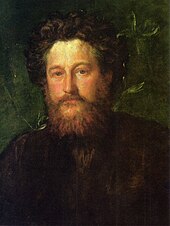Reception
William Morris and the Idea of Community: Romance, History and Propaganda

Ben Moore, reviewing William Morris and the Idea of Community: Romance, History and Propaganda in Modern Language Review, writes that Vaninskaya's study is well-researched, with the figure of Morris tying together her three threads of romance, history, and propaganda. The purpose of the book is to examine how socialists of the period viewed the idea of community life. Moore recommends the book to people interested in the history of socialism, and students of Morris. He finds the breadth of the study "impressive" but would have liked more "speculative analysis" of the puzzles that Vaninskaya's study reveals. [5]
Fantasies of Time and Death: Dunsany, Eddison, Tolkien
Sarah R. Waters, reviewing Fantasies of Time and Death: Dunsany, Eddison, Tolkien for Mythlore , writes that Vaninskaya deliberately looks at all three authors in their own right, avoiding the usual Inkling influence approach. She states that Vaninskaya shows that the authors all addressed questions of time and death, and uses Shakespeare's Hamlet and his Sonnet 18 to illuminate their approaches. Waters concludes that the book " does what Lewis argued the best literary criticism ought to do, it 'lead[s] in' rather than taking 'you out of the literature'." [6]
Kris Swank, reviewing the book in Journal of Tolkien Research , writes that it is an academic work that places Tolkien and death in the canon of fantasy, alongside Dunsany, Eddison, and others such as Hope Mirrlees and forerunners like William Morris and George MacDonald. Swank finds the study "erudite" and the chapters on the three authors "admirable", but feels that they do not "hang together as a unified monograph". All the same, she writes, scholars will find much to enjoy, especially in the Tolkien chapter. [7]
London Through Russian Eyes, 1896–1914
Michael Hughes, reviewing London Through Russian Eyes, 1896–1914 for the Slavonic and East European Review, writes that the collection offers "a rich set of readings that show how a number of Russian journalists and writers presented life in London to their readers back home". with an "excellent critical apparatus" and a "valuable" introduction. Hughes comments that a little more context on Russian radical thought would have been helpful, but that the attitudes in the book are "vividly outlined" and the sources are "a fascinating collection" which Vaninskaya has "meticulously edited". [8]
